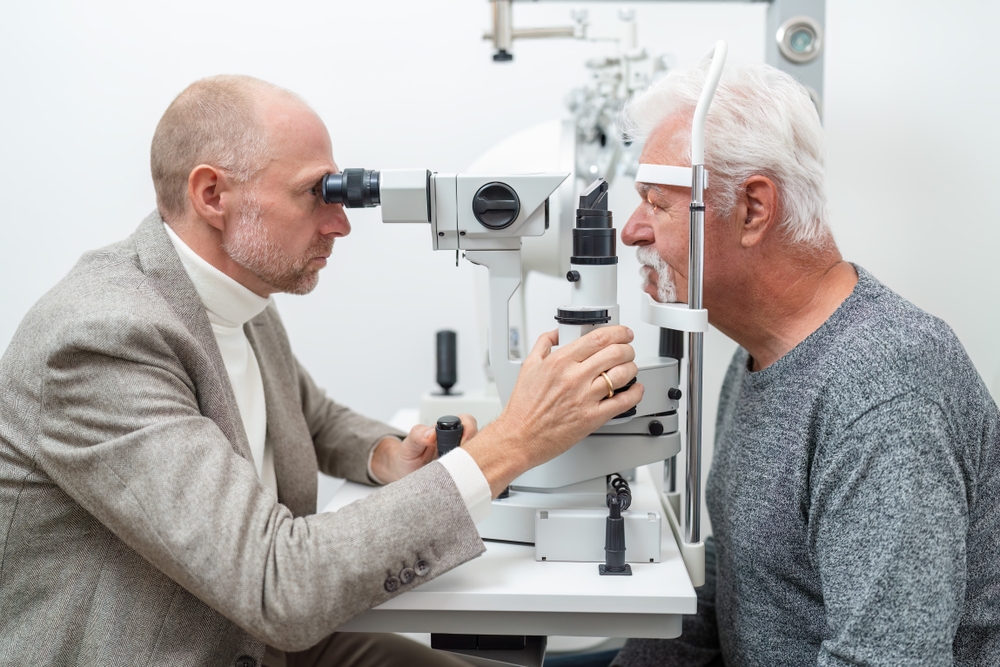Have you noticed that reading your favorite book takes more effort than it used to? Maybe night driving has become uncomfortable, or you find yourself squinting more often. These subtle changes in your vision could be early signs that you’re developing cataracts.
Cataracts are one of the most common age-related eye conditions, occurring when proteins within the natural lens of the eye break down and form clumps that cloud your vision. The good news is that recognizing the warning signs early allows you to take action before your vision significantly declines.
Keep reading to learn about six key signs of cataracts that indicate it may be time to schedule a comprehensive eye exam.
Sign 1: Cloudy or Blurry Vision

The most common sign of developing cataracts is a gradual clouding or blurring of your vision. Many patients describe this as looking through a foggy or frosted window. This cloudiness typically develops slowly over months or years, so you may not realize how much your vision has changed until it starts interfering with daily activities.
Updating your prescription may help temporarily, but as cataracts progress, glasses become less effective. If you’ve noticed persistent cloudiness that doesn’t improve with new lenses, cataracts could be the reason.
Sign 2: Increased Sensitivity to Light and Glare
Do bright lights bother you more than they used to? Increased sensitivity to light is a telltale sign of cataracts.
You might find yourself reaching for sunglasses immediately when you step outside, or feeling uncomfortable in brightly lit stores and restaurants. This happens because cataracts scatter light as it enters your eye, creating glare and making bright environments feel overwhelming.
Many people with developing cataracts also notice halos or starbursts around lights, especially at night. Streetlights and oncoming headlights can appear to have rings or rays extending from them. This can make night driving particularly challenging and even unsafe.
Sign 3: Difficulty Seeing at Night

Night vision problems often go hand in hand with cataracts. As the lens becomes cloudier, it becomes harder to see in low-light conditions. You might struggle to navigate dimly lit restaurants, have trouble reading menus in mood lighting, or find it difficult to see clearly when walking outside at night.
These challenges occur because cataracts reduce the amount of light that reaches your retina, and this effect is more noticeable when there is less light available. Driving at night can become especially difficult and dangerous. The combination of reduced light, glare from headlights, and the scattering effect of cataracts makes it hard to see road signs, pedestrians, and other vehicles clearly.
If family members or friends have expressed concern about your nighttime driving, or if you’ve started limiting your evening activities because you don’t feel safe behind the wheel, these are important warning signs that shouldn’t be ignored.
Sign 4: Faded or Yellowed Colors
Cataracts can significantly alter your color perception. As your natural lens becomes more clouded, colors may appear faded, dull, or washed out. You might not realize this is happening until you have cataract surgery and suddenly notice how bright and vivid colors truly are.
This color change can affect your daily life in subtle ways. You might have difficulty matching clothes, notice that your favorite painting doesn’t look as beautiful as it once did, or find that food appears less appetizing.
White objects may look yellow or beige, and you might have trouble distinguishing between darker shades, especially blues and purples.
Sign 5: Frequent Prescription Changes
If you find yourself needing new glasses or contact lenses more often than usual, cataracts could be the cause. As cataracts develop, they can cause temporary improvements or declines in vision, leading to frequent prescription changes. Some people with early cataracts even experience a brief period of improved near vision, sometimes called “second sight,” before their vision worsens again.
This frequent need for prescription updates happens because cataracts change how light bends as it enters your eye. Your eye doctor at The Eye Center can determine if these changes are due to cataracts or other age-related vision issues. If cataracts are responsible, updating your glasses will only provide temporary relief until the cataracts are treated.
Sign 6: Double Vision in One Eye
While less common than other symptoms, double vision in one eye can be a sign of developing cataracts. This occurs when the irregular clouding of the lens splits the light entering your eye, creating multiple images.
Monocular double vision caused by cataracts may improve slightly by squinting or looking through a pinhole. The double images might appear as ghostly or shadowy images around objects, making it difficult to read or recognize faces.
This symptom can be particularly frustrating and disorienting, but it often improves significantly after cataract surgery.
When to Schedule an Eye Exam

If you’ve recognized one or more of these signs of cataracts, scheduling a comprehensive eye exam should be your next step. You don’t need to wait until cataracts severely impact your vision. Early detection allows your eye doctor to monitor the progression of cataracts and recommend treatment at the right time for you.
At The Eye Center, our ophthalmologists use advanced diagnostic tools to evaluate your eyes and determine the extent of any cataracts. We’ll discuss how cataracts are affecting your daily life and help you understand your treatment options.
Are you experiencing symptoms of cataracts? Schedule a comprehensive cataract evaluation at The Eye Center in Greenfield or Athol, MA, today! Our experienced team will assess your vision, answer your questions, and guide you toward the best solution for your individual needs.
